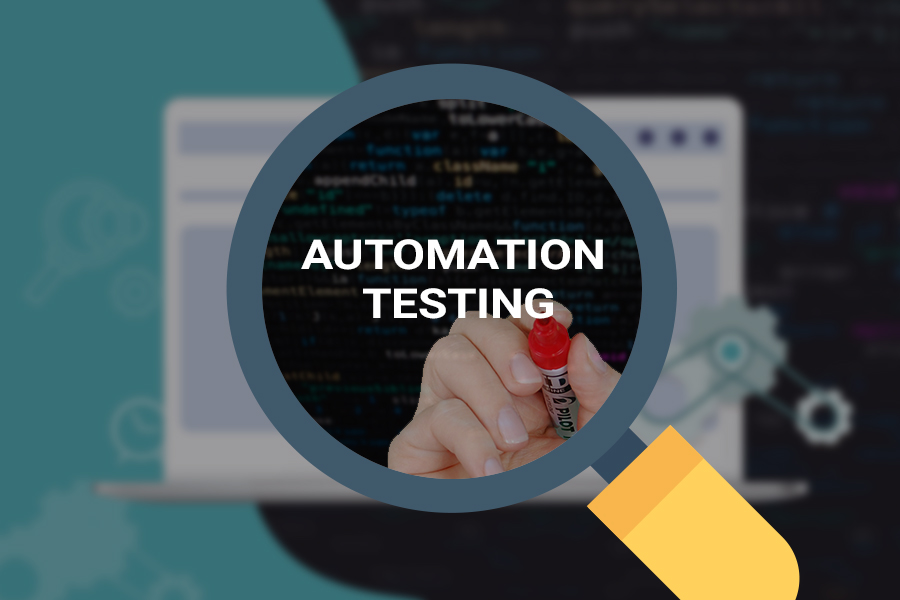From Handbook to Automated Screening: A Comprehensive Guide to Transitioning Smoothly and Successfully
In the realm of software program testing, the change from handbook to automated procedures has become a significantly important change for organizations looking for to boost effectiveness and precision in their testing techniques. The journey from guidebook to automated testing is not without its difficulties, but when approached purposefully and with a clear plan in mind, the advantages can be considerable.
Advantages of Automated Evaluating
Automated screening supplies countless advantages, boosting effectiveness and precision in software program growth processes. Automated tests can be run at the same time on multiple devices and operating systems, dramatically speeding up the screening phase compared to manual testing.
Moreover, automated screening guarantees a higher level of accuracy in detecting issues. Consistency in testing is additionally enhanced, as automated tests carry out the same actions precisely each time they are run.
Picking the Right Tools

Firstly, assess your requirements and goals. Comprehend the extent of your task, the modern technologies included, and the skill set of your group. This evaluation will help you establish the features and abilities you require in your screening tools.
Secondly, take into consideration the compatibility of the devices with your existing processes and systems. Smooth assimilation with your present software growth lifecycle is important to make certain a smooth shift to automation.
Additionally, review the scalability and versatility of the tools. As your screening requires develop, the tools must be able to adjust and fit adjustments successfully.
Lastly, consider the support and community around the devices. Durable support and an energetic user area can offer beneficial resources and aid when carrying out automated screening. By thoroughly taking into consideration these aspects, you can pick the right devices that line up with your demands and established the phase for a successful shift to automated screening.
Composing Reliable Test Scripts

When crafting examination scripts, it is important to think about the specific needs of the software application being examined and make certain that the scripts resolve all vital capabilities. Detailed and clear naming conventions for test manuscripts and test situations can boost readability and maintainability. Additionally, integrating mistake handling systems within the examination manuscripts can aid in determining and attending to problems immediately.
Furthermore, organizing examination scripts right into modular elements can improve reusability and scalability, decreasing redundancy and improving effectiveness in test manuscript upkeep. Routine testimonials and updates to examine manuscripts are vital to equal progressing software program needs and functionalities. By complying with these principles, testers can produce durable and reliable examination manuscripts that add substantially to the success of automated screening procedures.
Integrating Automation Into Workflows
Reliable assimilation of automation devices right into existing operations enhances and streamlines processes productivity within software advancement cycles. When integrating automation into process, it is important to determine repetitive tasks that can be automated to save time and reduce human mistake. By flawlessly incorporating automated click here now screening tools like Selenium or Appium right into the software program growth lifecycle, groups can accomplish faster comments on code changes, leading to quicker bug discovery and resolution. This combination permits continuous testing throughout the growth procedure, making sure that any type of issues are identified early on, causing higher software top quality. In addition, automation can be utilized to trigger examinations immediately after each code commit, giving instant validation and liberating testers to concentrate on even more complicated scenarios. Correct combination of automation tools calls for partnership between growth, testing, and procedures groups to establish a unified workflow that optimizes performance and effectiveness in supplying high-grade software program products.
Making Sure a Smooth Change
Successfully transitioning to automated testing includes thorough preparation and careful execution to lessen disturbances and make best use of effectiveness in the software program growth procedure - automation testing. To ensure a smooth transition, it is vital to begin by performing a thorough learn the facts here now assessment of the current testing processes and determining areas where automation can bring the most substantial advantages. Involving with all stakeholders early on while doing so, consisting of programmers, testers, and task supervisors, is critical for amassing assistance and buy-in for the automation effort
Communication is essential during this transition phase. Clear communication of the goals, benefits, and assumptions of automated screening aids to handle any type of resistance or issues that may occur. Furthermore, offering sufficient training and resources for employee to upskill in automation tools and techniques is vital for ensuring an effective shift.

Verdict
In conclusion, transitioning from manual to automated testing provides various benefits, including enhanced effectiveness and dependability. By choosing the suitable tools, writing effective test scripts, and incorporating automation flawlessly right into operations, companies can make sure a effective and smooth shift. It is necessary to accept automation as a useful possession in software application testing procedures to boost general high quality and productivity.
In the realm of software application testing, the change from guidebook to automated procedures has become a significantly essential shift for organizations seeking to boost effectiveness and accuracy in their screening methods. Automated tests can be run concurrently on numerous gadgets and operating systems, considerably speeding up the testing stage compared to hand-operated screening. Consistency in testing is also boosted, as automated tests implement the exact same steps Read Full Article specifically each time they are run.To guarantee the effective application of picked testing devices, the development of effective examination scripts plays an essential function in confirming the performance and efficiency of automated processes - automation testing. By adhering to these principles, testers can develop robust and reliable examination manuscripts that add significantly to the success of automated screening procedures